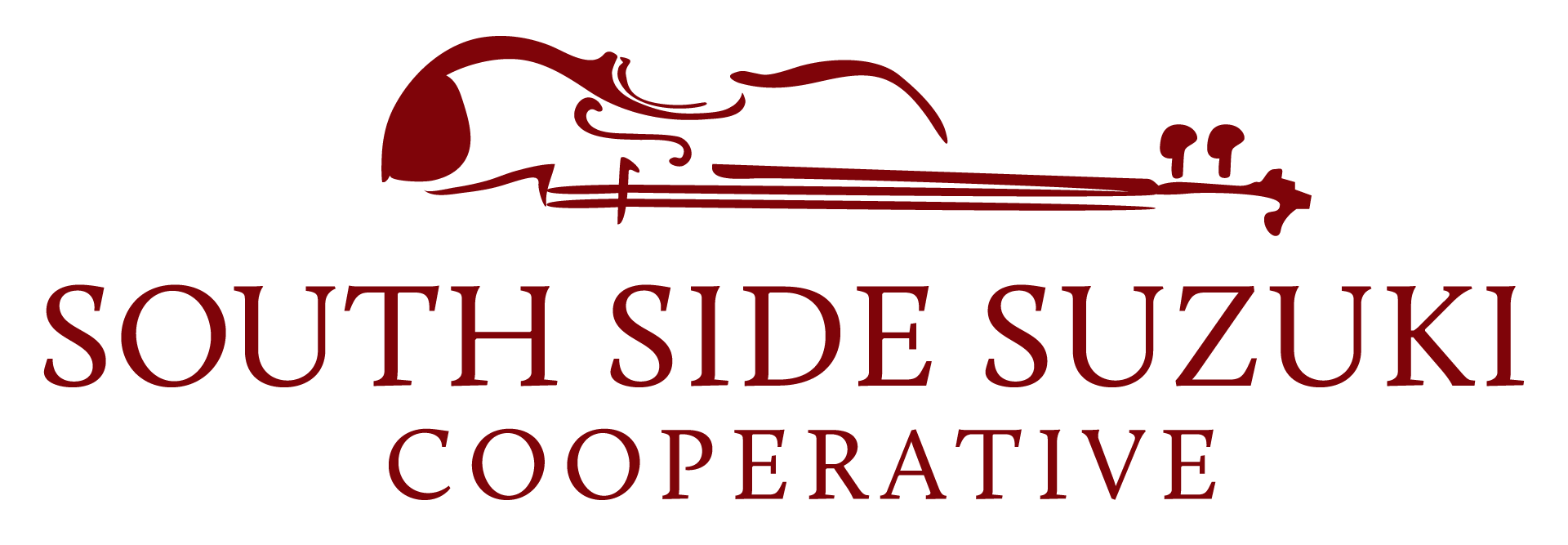The Suzuki Philosophy of Education
Often referred to as the 'mother-tongue' approach, founder Shinichi Suzuki began developing his method with the realization that children can and will learn from their environment. He witnessed children across the globe master their complicated native languages with ease through absorption and mimicry. Dr. Suzuki, believing that music is also a language, created a philosophy of early music instruction based on principals that parallel the environment of acquiring a native language. Key factors of the Suzuki approach include community learning, parental involvement, beginning at an early age, learning by ear, listening, repetition, and review.
community learning
Group class in addition to private lessons is a cornerstone of the Suzuki method. Students who participate in group and private lessons advance through the repertoire at a faster pace and have more fun while doing so! Group learning reinforces the musical and technical concepts taught in private lessons while introducing the social aspect of music making. We find that the motivation students receive from each other often goes farther than that of the teacher or parent. The encouragement and support of a community of teachers, parents, and peers is part of what makes South Side Suzuki so special for our students.
“Man is a child of his environment”
parental involvement
The Suzuki method requires a three-way partnership between the student, teacher, and parent. Parents are expected to attend lessons, observe, take notes, and serve as the "home teacher." An involved Suzuki parent is the key to fostering a positive and motivational learning environment that leads to developing musical ability.
“Children learn to smile from their parents.”
Early beginnings
The early years are crucial for developing mental processes and muscle coordination. Listening to music should begin at birth; formal training may begin as early as three years old. Parallel to mastering a language, we believe capitalizing on a child's ability to absorb sounds in the early developmental years to be greatly helpful in acquiring musical fluency. However, it is never too late to start and the Suzuki method can be applied to students of all ages!
Learning by ear
Children are taught to read after their ability to talk has been well established. In the same way, children should develop basic technical competence on their instruments before being taught to read music. Learning by ear frees the eyes and mind to observe posture, tone, and expressivity while playing rather having eyes glued to a page of music. Suzuki students who learn "by ear" and play "by heart" have great success developing a beautiful mature tone at even the earliest stages.
listening
Children learn words after hearing them spoken hundreds of times. Likewise, it is not possible to learn a new language (musical or verbal) without being surrounded by it and making it a part of your world. Since classical music is unfortunately becoming less a part of the modern world- we strive to create a community where students can organically absorb the traditions of classical music. Listening to music every day is important, especially listening to the pieces in the Suzuki repertoire so the child knows them intimately. Daily listening to recordings of the Suzuki repertoire helps the child to learn the melodies rapidly. Listening also aids in developing accurate pitch and rhythmic pulse. We recognize the importance of hearing a beautiful tone from a young age and encourage our students to listen to timeless recordings as well as seek out live performances of today's greatest artists.
repetition and review
The Suzuki method stresses the importance of repetition and review. Through consistent review of former pieces students create a repertoire in which they can strengthen old skills and learn new techniques.
“Knowledge is not skill. Knowledge plus ten thousand times is skill.”






